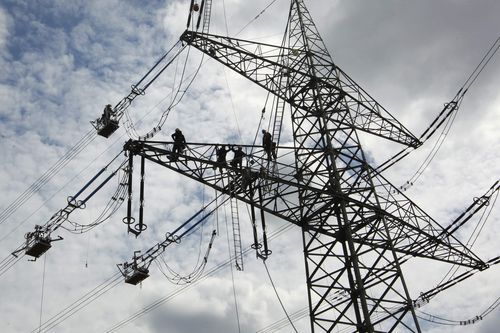Who’s the guy named Ohm?
The Kyiv oblast power supply authority has again made a mess of things. What next?
An accident occurred last Wednesday evening at a power substation in the satellite town of Vyshneve, Kyiv Sviatoshyn District. As a result, the mains voltage suddenly jumped to 450 volts, which damaged household electrical appliances in seven high-rises and cut off power in five nine-story buildings. Luckily, nobody was injured.
The Kyiv Oblast Administration’s press service has announced that a task force was formed in this connection, which consists of representatives of the oblast administration’s housing and public utilities department, Kyiv Sviatoshyn District administration, the Vyshneve City Executive Committee, the Oblast Power Supply Authority (oblenerho), and the public. The task force is working at the place of the accident. The Kyiv Oblast Administration Chairman Anatolii Prysiazhniuk has instructed that every apartment that suffered from the voltage surge be examined, the amount of damages be assessed, and the compensation mechanism and deadlines be set.
According to a 5th Channel correspondent, those in charge of power supply did not react to the scared people’s complaints. In the words of a town resident, “the TV set began to give off smoke which soon filled the room.” “I ran to a neighbor and asked what was going on. Meanwhile, people from our buildings had come out on the street and headed for the house maintenance office,” the woman continued, “because nobody gave us any information about what and why was going on. Bureaucrats in all the municipal services didn’t answer our phone calls.”
The channel’s reporter said that representatives of the authorities had come to see the people only two hours later and promised to look into the situation. Nobody said anything about the indemnity, although the people had estimated that the losses in one household came to at least 20,000 hryvnias.
The Day asked Ivan Plachkov, ex-minister for energy, chairman of the Kyivenerho Supervisory Board, to comment on what happened. “When our village was being electrified, electricians were given a very thorough training. They walked over the village, wearing special belts, rubber gloves, and crampons that helped them climb up the posts in case of some defects. Villagers treated them almost as demigods, for they knew what electricity is, they switched it on and off. These people ranked third after collective farm and village council chairmen. They were on the level of a hospital chief doctor, if not higher. They could quickly connect a house to the grid and rectify, without undue delay, any fault in the house wiring or at the substation. There was always electricity in the village. Then the kolkhoz chairman employed as electrician his nephew who had graduated as agronomist but there was no vacancy for one in the kolkhoz. The chair said the nephew would learn soon. Then a young livestock expert with a degree appeared in the village, but there was no vacancy for him either. So he also became an electrician. As a result, there remained one electrician with two assistants – an agronomist and a livestock expert – in the village. One could not answer all the calls at the same time. And then outages began – there were power cuts in farms, at school, etc. And when an accountant became the village’s third electrician, lights went out all the way in the village.”
“Why am I telling you this?” the energy expert continued. “There must be the same situation in Vyshneve. There is no critical mass of professional electricians in the local power supply bodies. I think they account for about five percent. The rest are accountants, financial managers, market researchers, etc. I am not against them – they are also needed. But electricians who know how to connect and disconnect, what three phases is, why a transformer is needed and how it functions should constitute a critical mass. I am sure that if you poll managers and, say, intermediate-level specialists, you will see that only about 10 percent of them know Ohm’s law. The rest do not know it and continue to manage. This is why power plants burn in Vuhlehirsk, six-month-long blackouts occur in Darnytsia, and there are voltage surges and fires in Vyshneve.”






